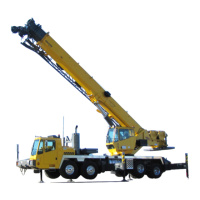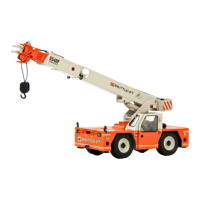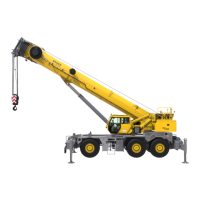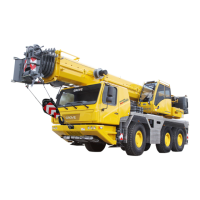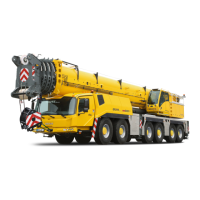Grove Published 02-21-2019, Control # 611-05 2-19
TMS9000-2 OPERATOR MANUAL SAFETY INFORMATION
Example, wind speeds greater than 13.4 m/s is NOT
permissible to lift a load greater than 20,160 lb, even if the
wind resistance area of the load is less than 119 ft
2
.
Refer to the above crane configuration for the following load
conditions:
Load example 2.1:
With known Wind Drag Coefficient of the load Cd,
• load to be lifted of 19,500 lb,
• Projected Wind Area Ap =70ft
2
,
• Wind Drag Coefficient Cd =1.5
then the wind resistance area of load can be estimated as
Awr
(load)
= Ap x Cd = 70 x 1.5 = 105 ft
2
Refer to the above Lifting Limits at wind speed V(z) > 30
mph and ≤ 45 mph. Comparing the load and wind resistant
area to the allowable:
• Is the load to be lifted less than allowable load?
19,500 lb ≤ 20,160 lb YES
• Is Awr
(load)
less than Awr
(allow)
?
105 ft
2
≤ 119 ft
2
YES
Conclusion: This load is permissible to lift in wind speed up
to 45 mph.
Load example 2.2:
With unknown Wind Drag Coefficient of the load Cd,
• Load to be lifted of 18,000 lb,
• Projected Wind Area Ap = 45 ft
2
,
• Wind Drag Coefficient Cd = unknown
NOTE: If exact Wind Drag Coefficient is not known
, it shall
be assumed as 2.4.
the wind resistance area of load can be estimated as
Awr
(load)
= Ap x Cd = 45 x 2.4 = 108 ft
2
Refer to the above Lifting Limits at wind speed V(z)
> 30 mph and ≤ 45 mph. Comparing the load and wind
resistant area to the allowable:
• Is the load to be lifted less than allowable load?
18,000 lb ≤ 20,160 lb YES
• Is Awr
(load)
less than Awr
(allow)
?
108 ft
2
≤ 119 ft
2
YES
Conclusion: This load is permissible to lift in wind speed up
to 45 mph.
Load example 2.3a:
With large wind resistance area of the load Awr
(load)
,
• Load to be lifted of 22,000 lb,
• Projected Wind Area Ap = 180 ft
2
,
• Wind Drag Coefficient Cd = 1.2
the wind resistance area of load can be estimated as:
Awr
(load)
= Ap x Cd = 180 x 1.2 = 216 ft
2
Refer to the above Lifting Limits at wind speed V(z) >
30 mph and ≤ 45 mph. Comparing the load to the allowable:
• Is the load to be lifted less than allowable load?
22,000 lb ≤ 20,160 lb NO
Conclusion: This load is NOT
permissible to lift in wind
speed up to 45 mph.
Refer to the above Lifting Limits at wind speed V(z) up to
30 mph. Comparing the load to the allowable:
Is the load to be lifted less than allowable load?
22,000 lb ≤ 25,200 lb . . . . . . . . . . . . . . . . . . . . YES
The permissible wind speed for this load is 30 mph,
depending on the wind resistance area of the load.
• Is Awr
(load)
less than Awr
(allow)
,?
216 ft
2
≤ 149 ft
2
. . . . . . . . . . . . . . . . . . . . . . . . . NO
Conclusion: This load is NOT
permissible to lift in wind
speed at 30 mph, but permitted to lift at a reduced wind
speed calculated as follows:
Ratio = 1.45
From (Table 2-7), the maximum permissible wind speed at
ratio of 1.45 (rounded to next higher table value of 1.6) is
23.7 mph.
Conclusion: This load is permissible to lift in wind speed up
to 23.7 mph only.
Load example 2.3b:
With large wind resistance area of the load Awr
(load),
• Load to be lifted of 12,000 lb,
• Projected Wind Area Ap = 125 ft
2
,
• Wind Drag Coefficient Cd = 1.3
the wind resistance area of load can be estimated as:
Awr
(load)
= Ap x Cd = 125 x 1.3 = 162 ft
2
Lifting Limits at wind speed V(z) > 30 mph
and ≤ 45 mph at this configuration:
• Maximum load 20,160 lb
• Maximum wind resistance area of load 119 ft
2

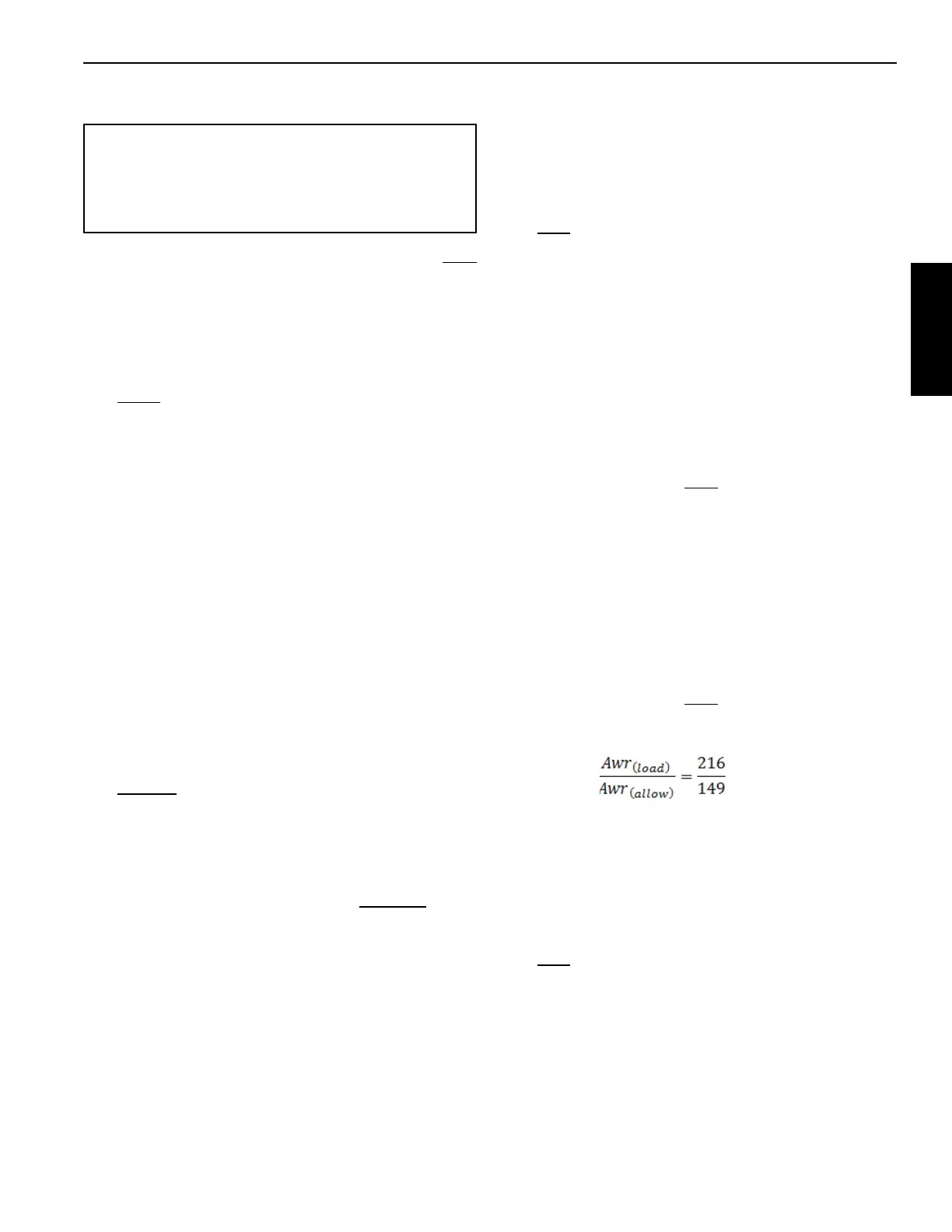